- Home
- Terry Pratchett
The Science of Discworld II Page 3
The Science of Discworld II Read online
Page 3
This strange loop has a curious effect on causality. We get up in the morning and leave the house at 7.15 because we have to get to work by 9 o’clock. Scientifically, this is a very bizarre form of causality: the future is affecting the past. That doesn’t normally occur in physics (except in very esoteric Quantum things, but let’s not get distracted). In this case, science has an explanation. What causes you to get up at 7.15 is not actually your future arrival at work. If in fact you fall under a bus and never make it to work, you still got up at 7.15. Instead of backwards causality, you have a mental model, in your brain, which is your best attempt to predict the day ahead. In that model, realised as buzzing electrons, you think that you ought to be at work by nine. That model, and its expectation of the future, exists now, or more accurately, a short time in the past. It is that expectation that causes you to get up instead of lying in and having a well-deserved snooze. And the causality is entirely normal: from past to future by way of actions taking place in the present.
So that’s all right then. Except that when you think of it, the causality is still very strange. A few electrons, buzzing in ways that are meaningless from the outside of the brain in which they reside, lead to a coherent action by a 70-kilogram lump of protein. Well, at that time in the morning it’s not a very coherent lump of protein, but you understand what we mean. That’s why we call this very creative piece of confusion a strange loop.
Those mental models are stories, simplified narratives that correspond in a rough-hewn way to aspects of the world that we consider to be important. Note that ‘we’: all mental models are infected with human biases. Our minds tell us stories about the world, and we base a great many of our actions on what those stories say. Here, the story is ‘the person who arrived at work late and was fired from their job’. That story alone will lever us out of bed at an unearthly hour, even if we get on well with the boss and fondly imagine that the story doesn’t apply to us. In other words, we make up our world according to the stories that we tell ourselves, and each other, about it.
We build minds in our children that way, too. The Western child is brought up on stories like the time Winnie the Pooh went to Rabbit’s house, ate too much honey and got stuck in the entrance hole on the way out.4 The story tells us not to be too greedy; that terrible things will happen to us if we are. Even the child knows that Winnie the Pooh is fiction, but they understand what the story is about. It doesn’t lead them to avoid pigging out on honey, and it doesn’t make them worry about getting stuck in the doorway when they try to leave the room after having eaten too much dinner. The story isn’t about literal interpretations. It’s a metaphor, and the mind is a metaphor machine.
The power of narrativium in Roundworld is immense. Things happen because of it that you would never expect from the laws of nature. For example, the laws of nature pretty much forbid an Earthbound object suddenly leaping up into space and landing on the Moon. They don’t say it’s impossible, but they do imply that you could wait a very long time indeed before it happened. Despite this, there is a machine on the Moon. Several. They all used to be down here. They are there because, centuries ago, people told each other romantic tales about the Moon. She was a goddess, who looked down on us. When full, she caused werewolves to change from humans into animals. Even then, humans were quite good at doublethink; the Moon was clearly a big silver disc, but, at the same time, she was a goddess.
Slowly those tales changed. Now the Moon was another world, and by harnessing the power of swans we could fly there in a chariot. Then (Jules Verne suggested) we could get there in a hollowed-out cylinder fired by a giant gun, located in Florida. Finally, in the 1960s, we found the right kind of swan (liquid oxygen and hydrogen) and the right kind of chariot (several million tons of metal) and we flew to the Moon. In a hollowed-out cylinder, launched from Florida. It wasn’t exactly a gun. Well, actually it was in a basic physical sense; the rocket was the gun and it went along for the ride, firing burnt fuel in place of a bullet.
If we’d not told ourselves stories about the Moon, there would have been no point in going there at all. An interesting view, maybe … but we ‘knew’ about the view only because we had told ourselves scientific stories about images sent back by space probes. Why did we go? Because we’d been telling ourselves that we would, one day, for several hundred years. Because we’d made it inevitable and introduced it into the ‘future story’ of a great many people. Because it satisfied our curiosity, and because the Moon was waiting. The Moon was a story waiting to be finished (‘First human lands on the Moon!’), and we went there because the story demanded it.
When Mind evolved on Earth, a kind of narrativium evolved alongside it. Unlike the Discworld variety of narrativium, which on the Disc is just as real as iron or copper or praseodymium, our variety is purely mental. It is an imperative, but the imperative has not been reified into a thing. However, we have the sort of mind, that respond to imperatives, and to many other non-things. And so it feels to us as if our universe runs on narrativium.
There is a curious resonance here, and ‘resonance’ is definitely the word. Physicists tell a story about how carbon forms in the universe. In certain stars there is a particular nuclear reaction, a ‘resonance’ between nearby energy levels, which gives nature a stepping-stone from lighter elements to carbon. Without that resonance, so the story goes, carbon could not have formed. Now, the laws of physics as we currently understand them involve several ‘fundamental constants’, such as the speed of light, Planck’s constant in quantum theory, and the charge on an electron. These numbers determine the quantitative implications of the physical laws, but any choice of constants sets up a potential universe. The way that a universe behaves depends on the actual numbers that are used in its laws. As it happens, carbon is an essential constituent of all known life. All of which leads up to a clever little story called the Anthropic Principle: that it’s silly for us to ask why we live in a universe whose physical constants make that nuclear resonance possible – because if we didn’t, there’d be no carbon, hence no us to ask about it.
The story of the carbon resonance can be found in many science books, because it creates a powerful impression of hidden order in the universe, and it seems to explain so much. But if we look a little more closely at this story, we find that it is a beautiful illustration of the seductive power of a compelling but false narrative. When a story seems to hang together, even consciously self-critical scientists can fail to ask the question that makes it fall apart.
Here’s how the story goes. Carbon is created in red giant stars by a rather delicate process of nuclear synthesis, called the triple-alpha process. This involves the fusion of three helium nuclei.5 A helium nucleus contains two protons and two neutrons. If you fuse three helium nuclei together, you get six protons and six neutrons. That, as it happens, is a carbon nucleus.
All very well, but the odds on such a triple collision occurring inside a star are very small. Collisions of two helium nuclei are much more common, though still relatively rare. It is extremely rare for a third helium nucleus to crash into two that are just colliding. It’s like paintballs and wizards. Every so often, a paintball will go splat! against a wizard. But you wouldn’t bet a lot of money on a second paintball hitting him at the exact same moment. This means that the synthesis of carbon has to take place in a series of steps rather than all at once, and the obvious way is for two helium nuclei to fuse, and then for a third helium nucleus to fuse with the result.
The first step is easy, and the resulting nucleus has four protons and four neutrons: this is one form of the element beryllium. However, the lifetime of this particular form of beryllium is only 10-16 seconds, which gives that third helium nucleus a very small target to aim at. The chance of hitting this target is incredibly small, and it turns out that the universe hasn’t existed long enough for even a tiny fraction of its carbon to have been made in this way. So triple collisions are out, and carbon remains a puzzle.
Unless …
there is a loophole in the argument. And indeed there is. The fusion of beryllium with helium, leading to carbon, would occur much more rapidly, yielding a lot more carbon in a much shorter time, if the energy of carbon just happens to be close to the combined energies of beryllium and helium. This kind of near-equality of energies is called a resonance. In the 1950s Fred Hoyle insisted that carbon has to come from somewhere, and predicted that there must therefore exist a resonant state of the carbon atom. It had to have a very specific energy, which he calculated must be about 7.6 MeV.6
Within a decade, it was discovered that there is a state with energy 7.6549 MeV. Unfortunately, it turns out that the combined energies of beryllium and helium are about 4 per cent higher than this. In nuclear physics, that’s a huge error.
Oops.
Ah, but, miraculously, that apparent discrepancy is just what we want. Why? Because the additional energy imparted by the temperatures found in a red giant star is exactly what’s needed to change the combined energy of beryllium and helium nuclei by that missing 4 per cent.
Wow.
It’s a wonderful story, and it rightly earned Hoyle huge numbers of scientific brownie-points. And it makes our existence look rather delicate. If the fundamental constants of the universe are changed, then so is that vital 7.6549. So it is tempting to conclude that our universe’s constants are fine-tuned for carbon, making it very special indeed. And it is equally tempting to conclude that the reason for that fine-tuning is to ensure that complex life turns up. Hoyle didn’t do that, but many other scientists have given into these temptations.
Sounds good: what’s wrong? The physicist Victor Stenger calls this kind of argument ‘cosmythology’. Another physicist, Craig Hogan, has put his finger on one of the weak points. The argument treats the temperature of the red giant and that 4 per cent discrepancy in energy levels as if they were independent. That is, it assumes that you can change the fundamental constants of physics without changing the way a red giant works. However, that’s obvious nonsense. Hogan points out that ‘the structure of stars includes a built-in thermostat that automatically adjusts the temperature to just the value needed to make the reaction go at the correct rate’. It’s rather like being amazed that the temperature in a fire is just right to burn wood, when in fact that temperature is caused by the chemical reaction that burns the wood. This kind of failure to examine the interconnectedness of natural phenomena is a typical, and quite common, error in anthropic reasoning.
In the human world, what counts is not carbon, but narrativium. And in that context we wish to state a new kind of anthropic principle. It so happens that we live in a universe whose physical constants are just right for carbon-based brains to evolve to the point at which they create narrativium, much as a star creates carbon. And the narrativium does crazy things, like putting machines on the Moon. Indeed, if carbon did not (yet) exist, then any narrativium-based lifeform could find some way to manufacture it, by telling itself a really gripping story about the need for carbon. So causality in this universe is irredeemably weird. Physicists like to put it all down to the fundamental constants, but it’s more likely an example of Murphy’s law.
But that’s another story.
The more we think about narrative in human affairs, the more we see that our world revolves around the power of story. We build our minds by telling stories. Newspapers select news according to its value as a story, not according to how intrinsically important it is. ‘England loses cricket match to Australia’ is a story (though not a very surprising one) and it goes on the front page. ‘Doctors think that they may have improved the diagnosis of liver disease by 1 per cent’ is not a story, even though most science works like that (and in years to come, depending on the state of your liver, you might think it’s a rather more important story than a cricket match).
‘Scientist claims cure for cancer’ is a story, though, even if the supposed cure is nonsense. So are ‘spiritualist medium claims a cure for cancer’, and ‘Secret code predictions hidden in the Bible’, more’s the pity.
As we write, there is a furore over a small group of people who are proposing to clone a human being. It’s a major story, but very few newspapers are reporting the most likely result of this attempt, which will be abject failure. It took 277 failures, many rather nasty, before Dolly the Sheep was cloned, and she has now been found to have serious genetic defects, poor lamb.
Trying to clone a human may indeed be unethical, but that’s not the best reason for objecting to this misguided and foolish attempt. The best reason is that it won’t work, because nobody yet knows how to overcome numerous technical obstacles; moreover, if by some stroke of (mis)fortune it did happen to work, any child produced would have serious defects. Producing such a child, now that is unethical.
Making ‘carbon copies’ of human beings, which is the usual basis of the newspapers’ story about the ethics, is beside the point. That’s not what cloning does, anyway. Dolly the Sheep was not genetically identical to her mother, though she came close. Even if she had been, she would still have been a different sheep, moulded by different experiences. For that matter, the same would be true even if she was genetically identical to her mother. For the same reason, cloning a dead child will not bring that child back to life. Much of the media discussion of the ethics of cloning, like much of the public understanding of science, is vaguely stirred through with science fiction. In this arena, as in so many, the power of the story outweighs any questions about the real factual basis.
Human beings do not just tell stories, or just listen to them. They are more like Granny Weatherwax, who is aware of the power of story on Discworld, and refuses to be trapped by the story’s narrativium. Instead, she uses the power of story to mould events according to her own wishes. Roundworld priests, politicians, scientists, teachers and journalists have learned to use the power of story to get their messages across to the public, and to manipulate or persuade people to behave in particular ways. The ‘scientific method’ is a defence mechanism against that kind of manipulation. It tells you not to believe things because you want them to be true. The proper scientific response to any new discovery or theory, especially your own, is to look for ways to disprove it. That is, to try to find a different story that explains the same things.
The anthropologists got it wrong when they named our species Homo sapiens (‘wise man’). In any case it’s an arrogant and bigheaded thing to say, wisdom being one of our least evident features. In reality, we are Pan narrans, the storytelling chimpanzee.
At this point, the structure of The Science of Discworld 2: The Globe becomes very self-referential. You will need to bear that in mind as we proceed. The book is itself a story – no – two intertwined stories. One, the odd-numbered chapters, is a Discworld fantasy. The other, the even-numbered chapters, is a story of the science of the Mind (metaphysical again). The two are closely related, designed to fit together like foot and glove;7 the science story is presented as a series of Very Large Footnotes to the fantasy story.
So far, so good … but it gets more complicated. When you read a Discworld story, you play a curious mental game. You react as if the story is true, as if Discworld actually exists, as if Rincewind and the Luggage are real, and Roundworld is but a fragment of a long-forgotten dream. (Please stop interrupting, Rincewind, we know it’s different from your point of view. Yes, of course we’re the ones that don’t exist, we’re bundles of rules whose consequences take place only inside a small globe on a dusty shelf in Unseen University. Yes, we do appreciate that, and will you please shut up?) Sorry about that.
People have become very good at playing this game, and we will exploit that by setting Earth and Discworld on the same narrative level, so that each illuminates the other. In the first book, The Science of Discworld, the Discworld defined what is real. That’s why reality makes such good sense. Roundworld is a magical construct, designed to keep the magic out, and that’s why it makes no sense at all (to wizards, at least). In this sequel
Earth acquires inhabitants, the inhabitants acquire minds, and minds do strange things. They bring narrativium to a story-less universe.
A computer can do a billion sums in the blink of a keystroke and get them all right, but it couldn’t pretend to be a cowardly wizard if one walked up to it and thumped it on the memory cache. In contrast, we can think ourselves inside the mind of a cowardly wizard with ease, or recognise someone else when they’re acting the part of one, but we’re completely lost when it comes to doing several million simple sums a second. Even though, to someone not of this universe, that might appear to be a simpler task.
That’s because we run on narrativium, and computers don’t.
1 PET = Positron Emission Tomography, meaning that the machine picks up tiny particles emitted by the tissues of the brain and reconstructs a map of what’s going on inside it.
2 And you’d be in the position of the horrible Discworld ‘Auditors’, who are anthropomorphic representations of the rules of the universe, who in Thief of Time reduce paintings and statues to their component atoms in a fruitless search for ‘beauty’.
3 And many things that there aren’t, such as Dark.
4 It would have been an exit hole, but he didn’t.
5 In the simplest picture of an atom, the nucleus is a relatively small central region made from protons and neutrons. Electrons ‘orbit’ the nucleus at a distance. The triple-alpha process takes place in a plasma, where the atoms have been stripped of their electrons, so only their nuclei are involved. Later, as the plasma cools, the nuclei can acquire the necessary electrons.
6 1 MeV is one million electron-volts. An electron-volt is a unit of energy, obviously, and for our current purposes it doesn’t really matter what that unit is. For the record, it’s the energy of an electron when its potential is raised by one volt, and is equal to 1.6 × 10-12 ergs. And the energy referred to here is the excess energy compared to the lowest energy state of the atom, its ‘ground state’. What’s an erg? Look it up if you really need to know.

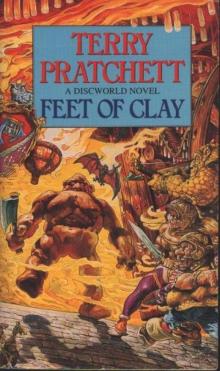 Feet of Clay
Feet of Clay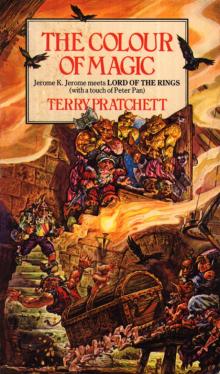 The Color of Magic
The Color of Magic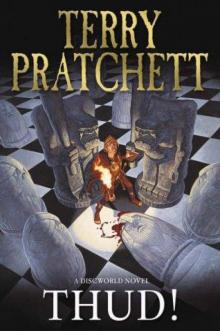 Thud!
Thud!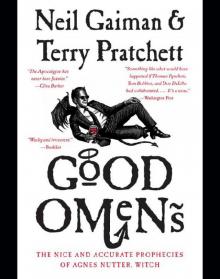 Good Omens: The Nice and Accurate Prophecies of Agnes Nutter, Witch
Good Omens: The Nice and Accurate Prophecies of Agnes Nutter, Witch I Shall Wear Midnight
I Shall Wear Midnight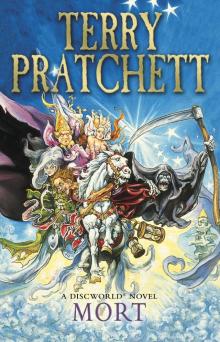 Mort
Mort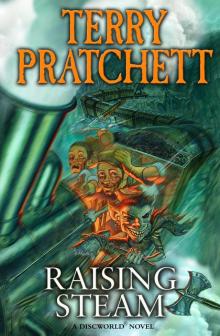 Raising Steam
Raising Steam Guards! Guards!
Guards! Guards!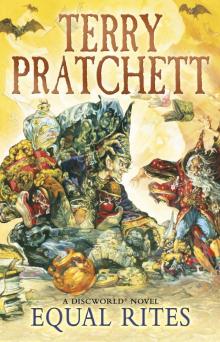 Equal Rites
Equal Rites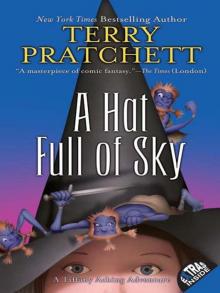 A Hat Full of Sky
A Hat Full of Sky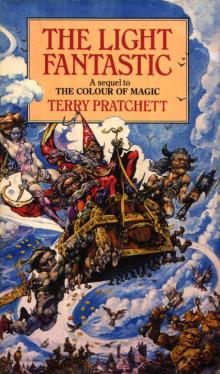 The Light Fantastic
The Light Fantastic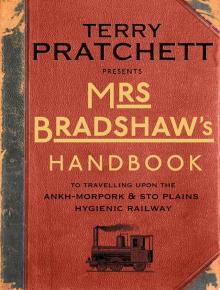 Mrs Bradshaw's Handbook
Mrs Bradshaw's Handbook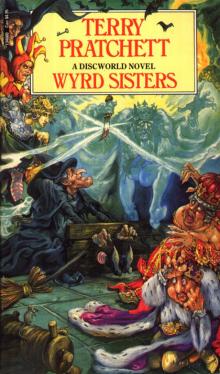 Wyrd Sisters
Wyrd Sisters Soul Music
Soul Music Small Gods
Small Gods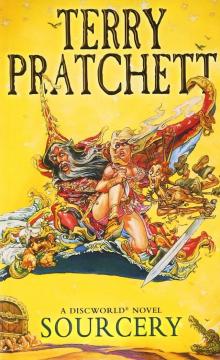 Sourcery
Sourcery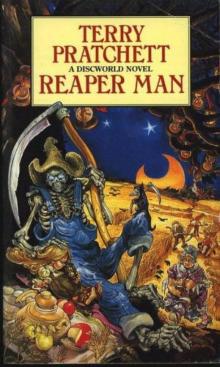 Reaper Man
Reaper Man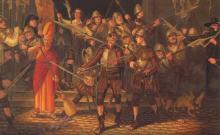 Night Watch
Night Watch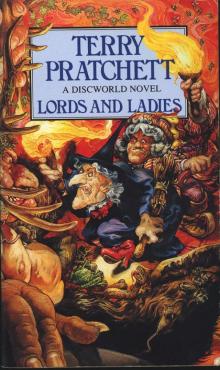 Lords and Ladies
Lords and Ladies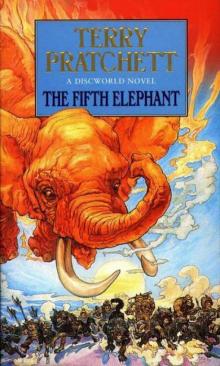 The Fifth Elephant
The Fifth Elephant Monstrous Regiment
Monstrous Regiment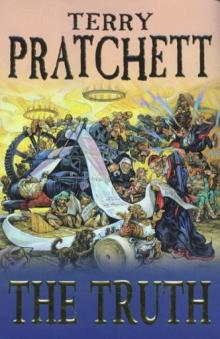 The Truth
The Truth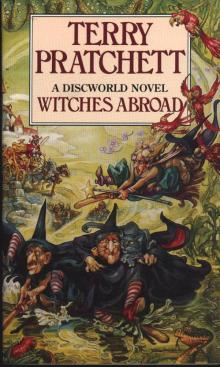 Witches Abroad
Witches Abroad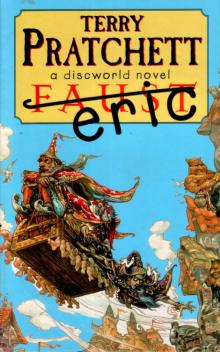 Eric
Eric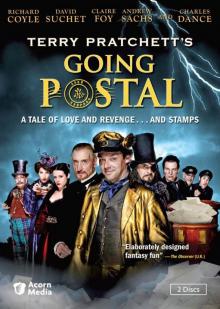 Going Postal
Going Postal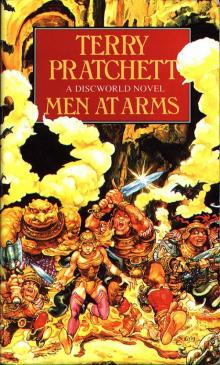 Men at Arms
Men at Arms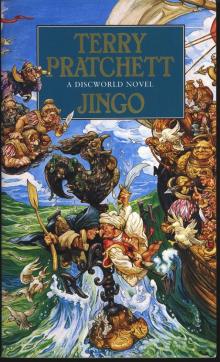 Jingo
Jingo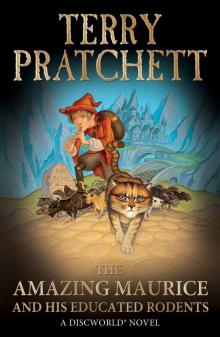 The Amazing Maurice and His Educated Rodents
The Amazing Maurice and His Educated Rodents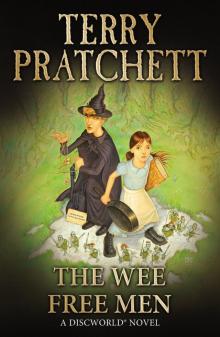 The Wee Free Men
The Wee Free Men Pyramids
Pyramids Wintersmith
Wintersmith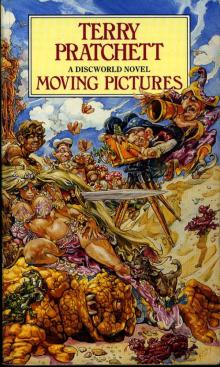 Moving Pictures
Moving Pictures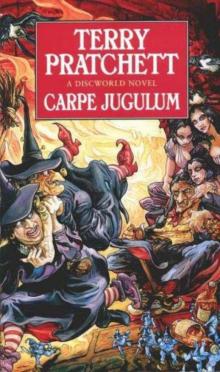 Carpe Jugulum
Carpe Jugulum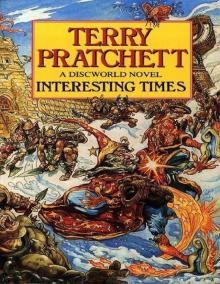 Interesting Times
Interesting Times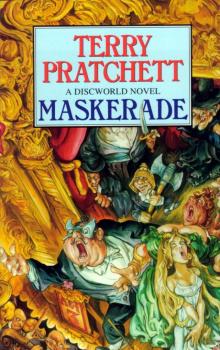 Maskerade
Maskerade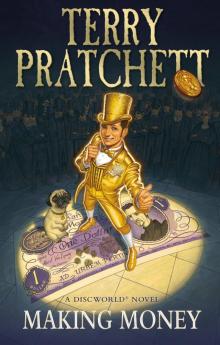 Making Money
Making Money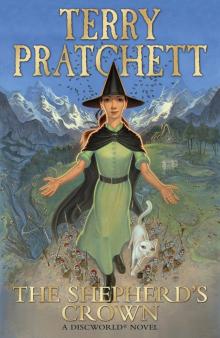 The Shepherd's Crown
The Shepherd's Crown Hogfather
Hogfather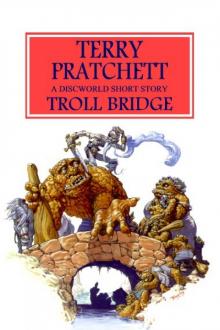 Troll Bridge
Troll Bridge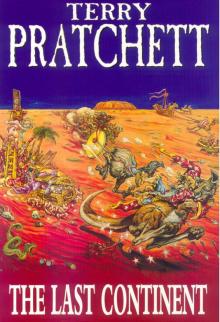 The Last Continent
The Last Continent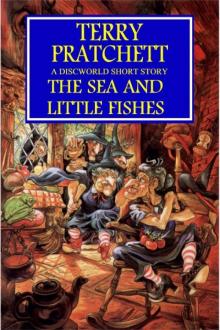 The Sea and Little Fishes
The Sea and Little Fishes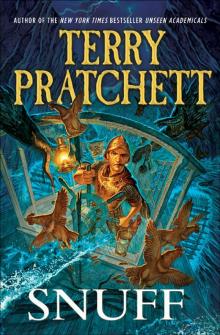 Snuff
Snuff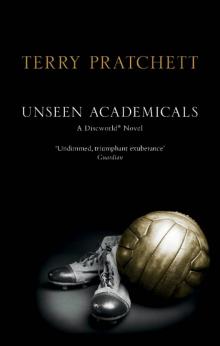 Unseen Academicals
Unseen Academicals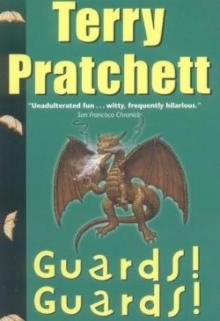 Guards! Guards! tds-8
Guards! Guards! tds-8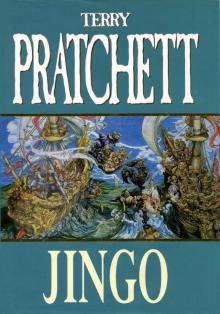 Jingo d-21
Jingo d-21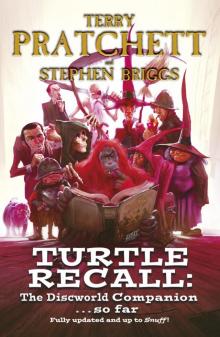 Turtle Recall: The Discworld Companion ... So Far
Turtle Recall: The Discworld Companion ... So Far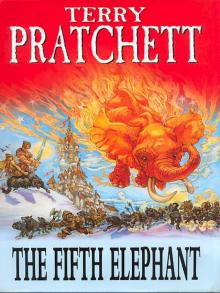 The Fifth Elephant d-24
The Fifth Elephant d-24 Discworld 39 - Snuff
Discworld 39 - Snuff The Long War
The Long War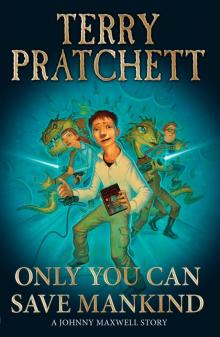 Only You Can Save Mankind
Only You Can Save Mankind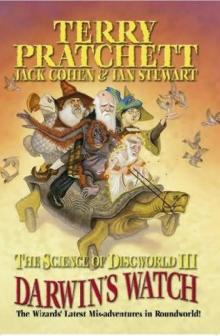 The Science of Discworld III - Darwin's Watch tsod-3
The Science of Discworld III - Darwin's Watch tsod-3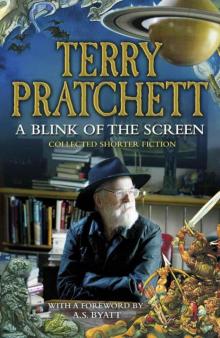 A Blink of the Screen: Collected Short Fiction
A Blink of the Screen: Collected Short Fiction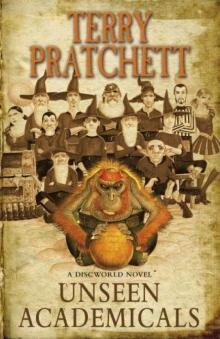 Unseen Academicals d-37
Unseen Academicals d-37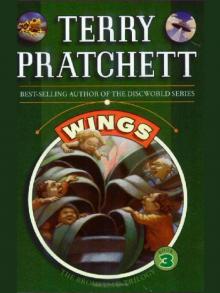 Wings
Wings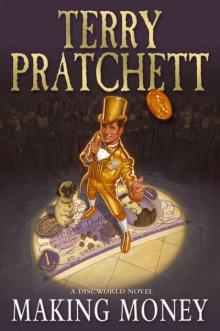 Making Money d-36
Making Money d-36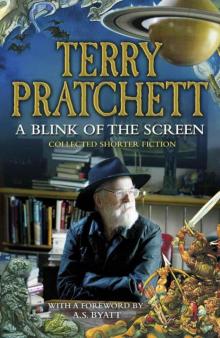 A Blink of the Screen
A Blink of the Screen Johnny and the Bomb
Johnny and the Bomb Dodger
Dodger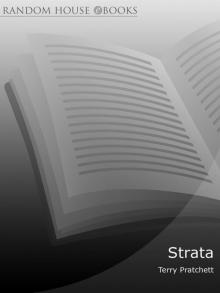 Strata
Strata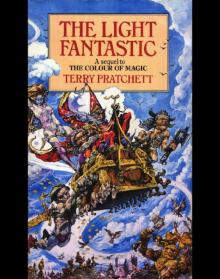 Discworld 02 - The Light Fantastic
Discworld 02 - The Light Fantastic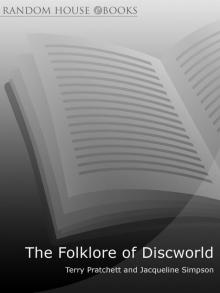 The Folklore of Discworld
The Folklore of Discworld The Science of Discworld
The Science of Discworld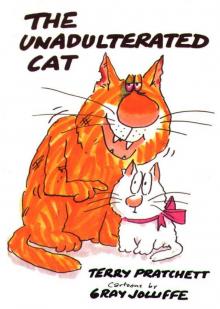 The Unadulterated Cat
The Unadulterated Cat Raising Steam: (Discworld novel 40) (Discworld Novels)
Raising Steam: (Discworld novel 40) (Discworld Novels)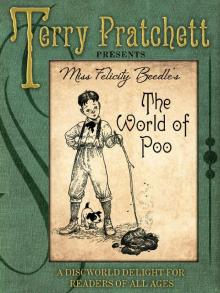 The World of Poo
The World of Poo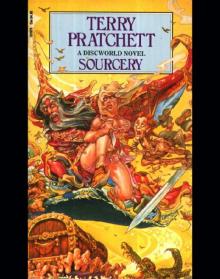 Discworld 05 - Sourcery
Discworld 05 - Sourcery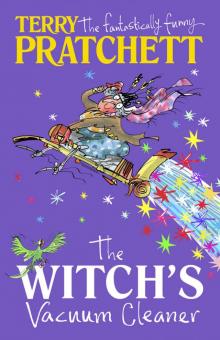 The Witch's Vacuum Cleaner: And Other Stories
The Witch's Vacuum Cleaner: And Other Stories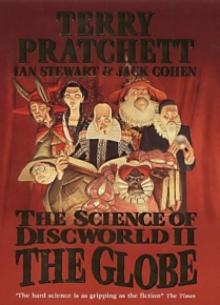 The Science of Discworld II - The Globe tsod-2
The Science of Discworld II - The Globe tsod-2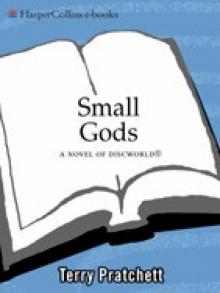 Small Gods: Discworld Novel, A
Small Gods: Discworld Novel, A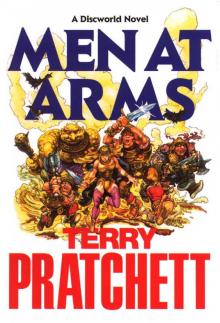 Men at Arms tds-15
Men at Arms tds-15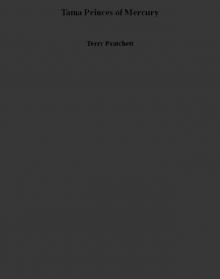 Tama Princes of Mercury
Tama Princes of Mercury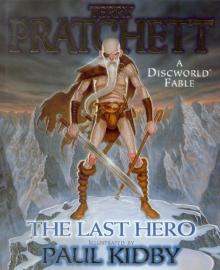 The Last Hero (the discworld series)
The Last Hero (the discworld series)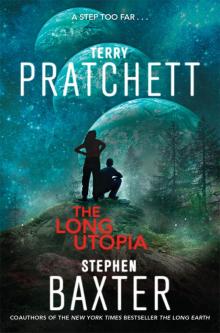 The Long Utopia
The Long Utopia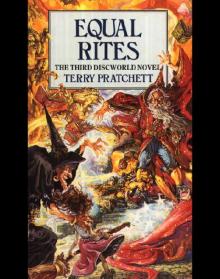 Discworld 03 - Equal Rites
Discworld 03 - Equal Rites Terry Pratchett - The Science of Discworld
Terry Pratchett - The Science of Discworld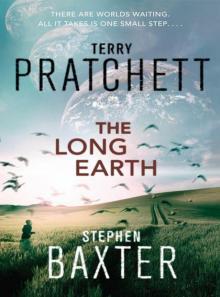 The Long Earth
The Long Earth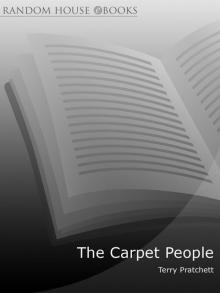 The Carpet People
The Carpet People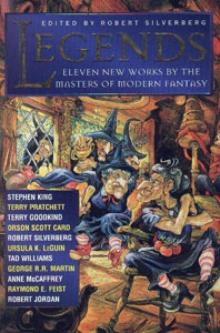 The Sea and Little Fishes (discworld)
The Sea and Little Fishes (discworld)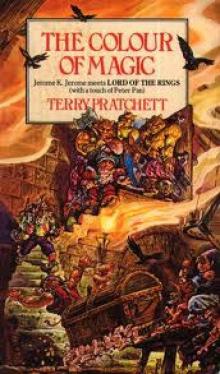 The Colour of Magic
The Colour of Magic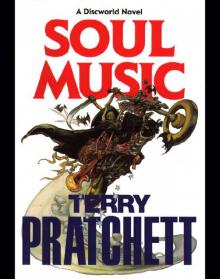 Discworld 16 - Soul Music
Discworld 16 - Soul Music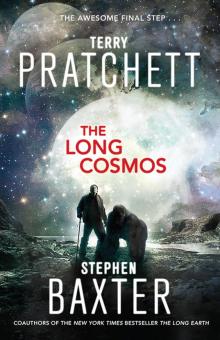 The Long Cosmos
The Long Cosmos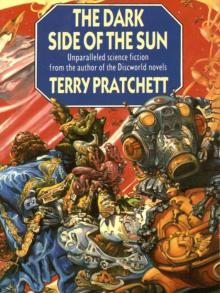 The Dark Side of the Sun
The Dark Side of the Sun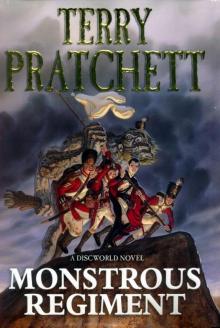 Monstrous Regiment tds-28
Monstrous Regiment tds-28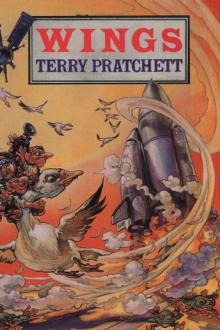 The Bromeliad 3 - Wings
The Bromeliad 3 - Wings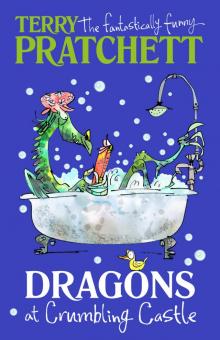 Dragons at Crumbling Castle: And Other Stories
Dragons at Crumbling Castle: And Other Stories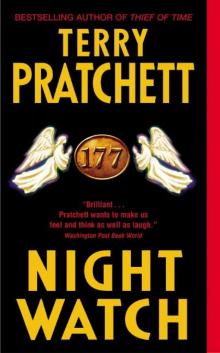 Night Watch tds-27
Night Watch tds-27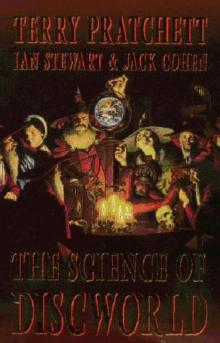 The Science of Discworld I tsod-1
The Science of Discworld I tsod-1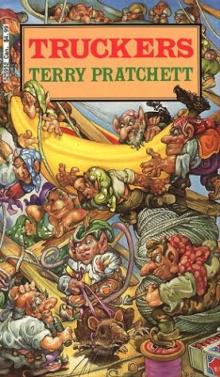 The Bromeliad 1 - Truckers
The Bromeliad 1 - Truckers The Science of Discworld Revised Edition
The Science of Discworld Revised Edition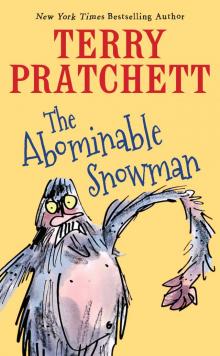 The Abominable Snowman
The Abominable Snowman Father Christmas’s Fake Beard
Father Christmas’s Fake Beard The Bromeliad Trilogy
The Bromeliad Trilogy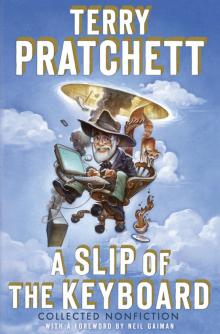 A Slip of the Keyboard
A Slip of the Keyboard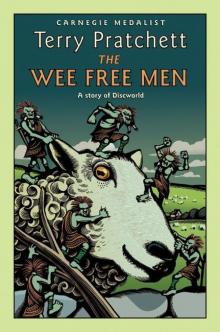 The Wee Free Men d(-2
The Wee Free Men d(-2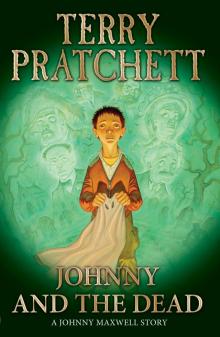 Johnny and the Dead
Johnny and the Dead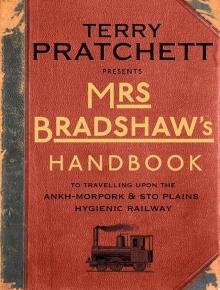 Mrs Bradshaw's Handbook (Discworld Novels)
Mrs Bradshaw's Handbook (Discworld Novels)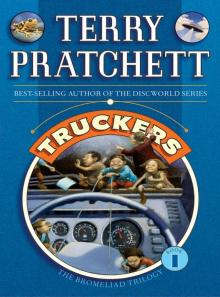 Truckers
Truckers The Amazing Maurice and His Educated Rodents d(-1
The Amazing Maurice and His Educated Rodents d(-1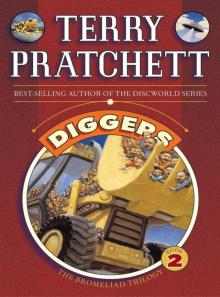 Diggers
Diggers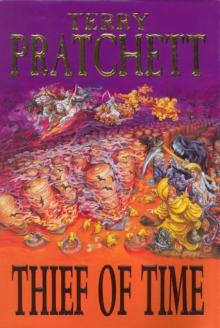 Thief of Time tds-26
Thief of Time tds-26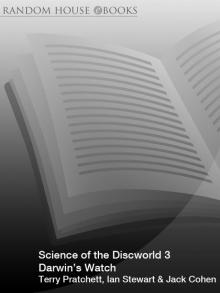 Science of Discworld III
Science of Discworld III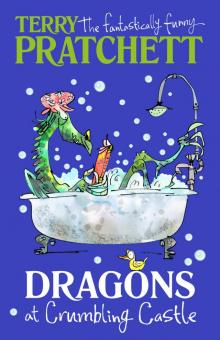 Dragons at Crumbling Castle
Dragons at Crumbling Castle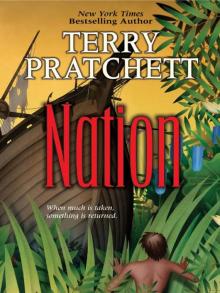 Nation
Nation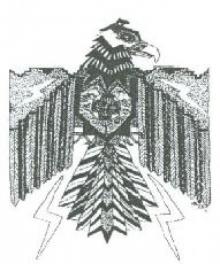 Darwin's Watch
Darwin's Watch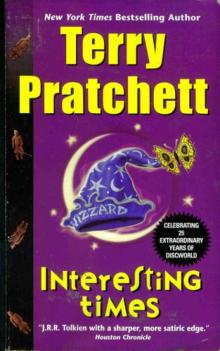 Interesting Times d-17
Interesting Times d-17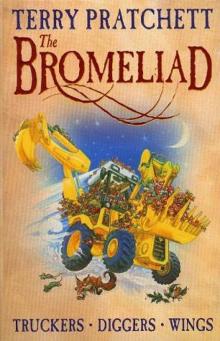 The Bromeliad 2 - Diggers
The Bromeliad 2 - Diggers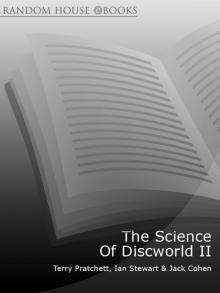 The Science of Discworld II
The Science of Discworld II